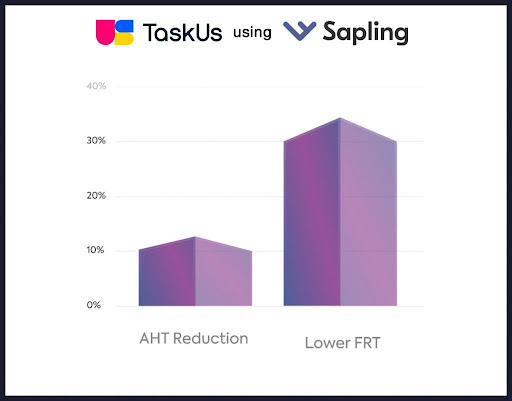First Response Time (FRT)
First Response Time (FRT) Formula
First response time measures how long it takes for an agent to respond to a customer support request. It is the time passed between a customer sending a ticket and an agent first replying to it. FRT is typically measured during business hours, so it's not affected by night-time or after-hours inquiries.
Companies typically include a baseline FRT in their service level agreement, guaranteeing a response within a specified timeframe. Automated responses do not count in the FRT.
A fast issue resolution is one of the most critical factors for customer satisfaction -- all customers want speedy answers and swift solutions.
The Importance of First Response Time (FRT)
A speedy first response reassures your customer as they know you're here for them and are looking to help them with their issues. Even a quick, less specific response can be helpful.
Automated responses are one approach. However, there is a trade-off here and fast, personalized will improve customer satisfaction.
How to Calculate Average First Response Time?
FRT is the duration of time passed between when a person submitted a request to the time when an agent responds.
When calculating FRT, it's best to measure it in business hours, taking the median instead of the average since FRT can vary depending on the issue's complexity.
What is a good First Response Time?
A good First Response Time will depend on the channel and industry. A support ticket for a technical product, for example, will have much higher FRT than an inbound chat inquiring about a late food delivery.
In some cases, such as for inbound leads on Salesforce, a fast first response time is absolutely critical. Thankfully, it's easy to be better than average: according to Hubspot, the average B2B lead response time is a staggering 42 hours.
In this day and age, we believe waiting even 24 hours to reply is unacceptable. Zendesk's research in the 2021 CX Trends report found that 72.5 percent of customers value quick ticket resolutions.
In our experience, for channels such as live chats, a good First Response Time is under a minute. Longer than that and a customer will likely shift to other activities -- we have all experienced cases where we've left a support chat, only to come back and find that the agent has already marked the chat as inactive.
How to Improve First Reply Time?
Customer service teams should be knowledgeable and well-equipped to resolve customer issues quickly. So, investing in training and some tools is critical for a fast FRT.
Sapling’s AI messaging tools (grammar, autocomplete, snippets, chat suggest) have helped companies like TaskUS (a BPO company) to reduce their average handle time by 10% and their first response time by 35%.

Steps to take to improve first response time:
- Improve the training of your customer service agents.
- Remove distractions and reduce multitasking -- there of course will be a trade-off here.
- While it's best to provide an omnichannel approach, certain channels are inherently faster, and you may wish to direct customers to those.
- Ensure you enable your agents with the best tools and systems to make their job easier.



